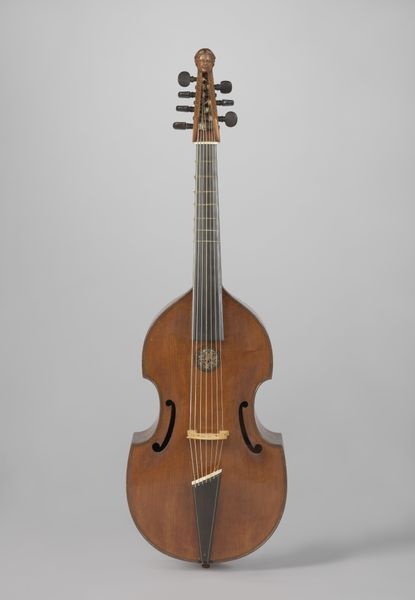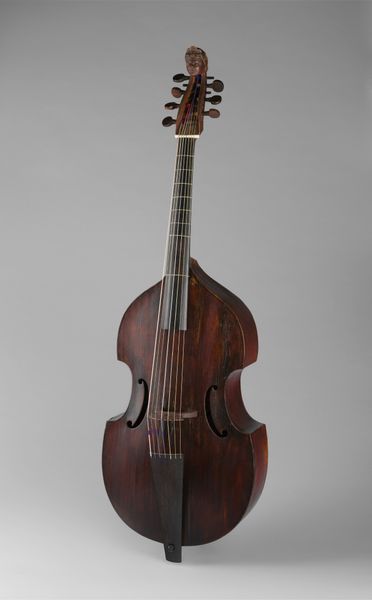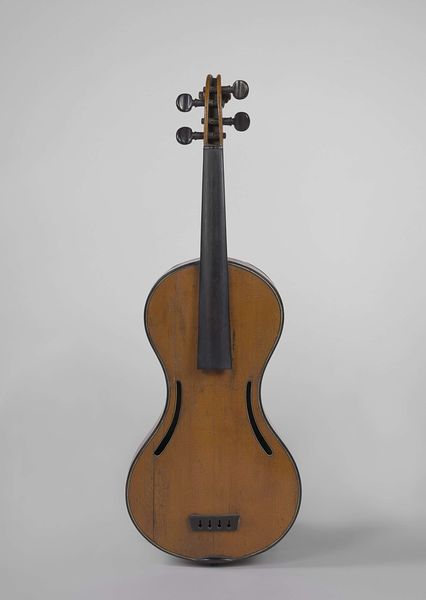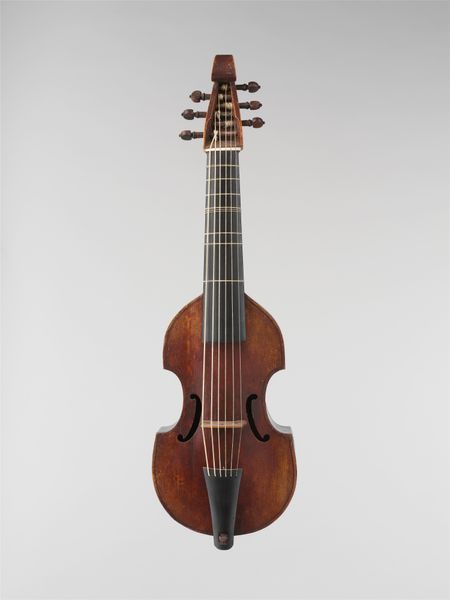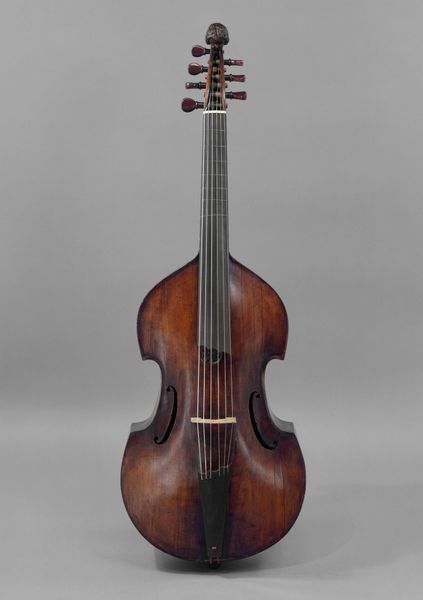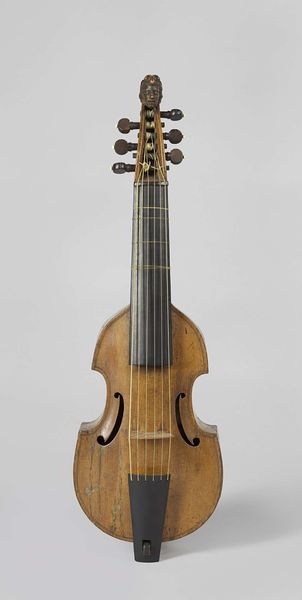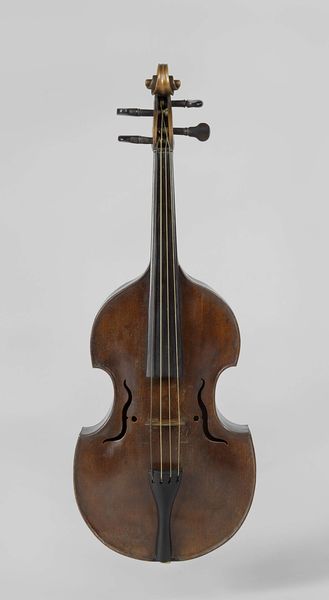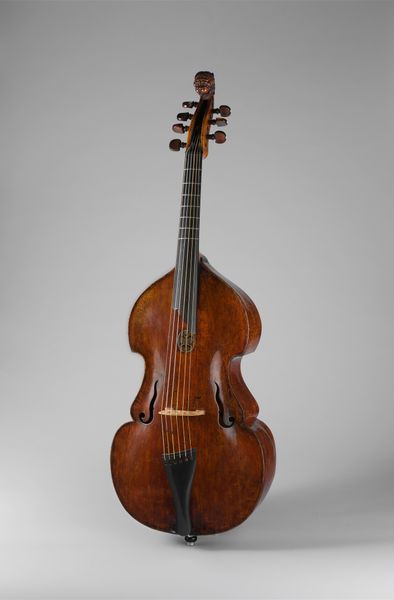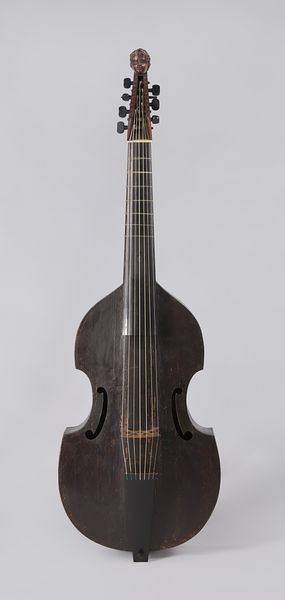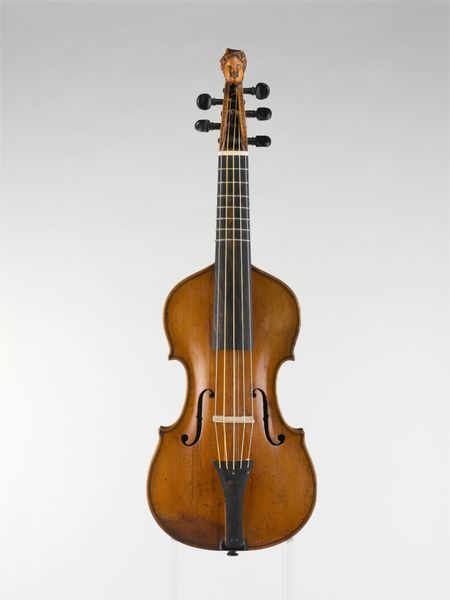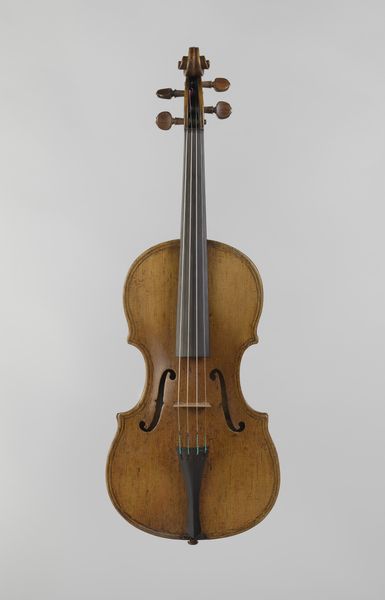
carving, sculpture, wood
#
carving
#
baroque
#
sculpture
#
wood
Dimensions: height 117 cm, width 38 cm, depth 13.5 cm
Copyright: Rijks Museum: Open Domain
This bass viol was crafted by Pieter Rombouts, a Dutch instrument maker who lived between 1667 and 1740. During the late 17th and early 18th centuries, the Dutch Republic experienced a cultural shift, moving away from its Golden Age and towards a more international, aristocratic style influenced by France. Musical instruments like this one were not just functional tools but also signifiers of social status and taste. The carved female head at the top of the neck is a symbol of idealized beauty and grace, reflecting societal expectations of women and their roles in art and culture. The deep, resonant tones of the bass viol were often used to accompany vocals, enriching the emotional depth of music. It calls us to consider the role of music in expressing and shaping cultural identities. The viol stands as a testament to the intricate relationship between artistry, social standing, and cultural values of the era.
Comments
rijksmuseum about 2 years ago
⋮
The bass viol was commonly used as a solo instrument or to provide the bass line in chamber music ensembles. Its six strings are played with a bow held underhand and, like the lute, the viol has gut frets tied around the neck. This instrument was made by Hendrik Jacobs, one of the most important 17th-century Dutch violin makers.
Join the conversation
Join millions of artists and users on Artera today and experience the ultimate creative platform.
